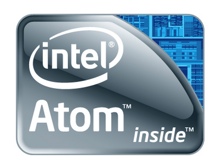Intel may accelerate 14-nanometer Atom production


While Intel was undoubtedly the king when it came to PC processors, the company is having a tough time making the transition from the PC to post-PC devices such as smartphones and tablets.
But if the rumors are true, the company is to make an assault on mobile with new 14-nanometer Atom processors much earlier than expected.
The problem facing Intel at the moment is the gap in time between releasing new Core parts and Atom parts built using the same architecture. For example, 22-nanometer Core processors have been available for PCs and servers for over a year, but the company has only just started production of 22-nanometer Atom parts, and devices powered by these parts aren't expected to be in stores before the holidays.
That's a massive lag, and one that is hurting Intel given the current affinity for mobile devices.
But according to Barron's, Intel will announce a much more aggressive timeline for it's 14-nanometer parts — codenamed Bay Trail-T — at its annual conference for developers, called IDF, scheduled to kick off September 10.
Here it is expected that Intel will unveil 14-nanometer Core parts that will enter production during the second quarter of 2014, and 14-nanometer Atom parts which will enter production six months later, cutting the lag by six months.
"This is rather like in chess," analyst Tom Halfhill of the Linley Group told Barron's, "setting up the board before trying to take the king."
Thee 14-nanometer Atom parts are expected to give Intel an advantage over ARM's mobile offerings, and put Intel in the forefront of mobile chips for the first time.
The downside of Atom is that they bring in far less cash than the corresponding Core parts, which means that Intel needs to figure a way to exist in a leaner ecosystem.